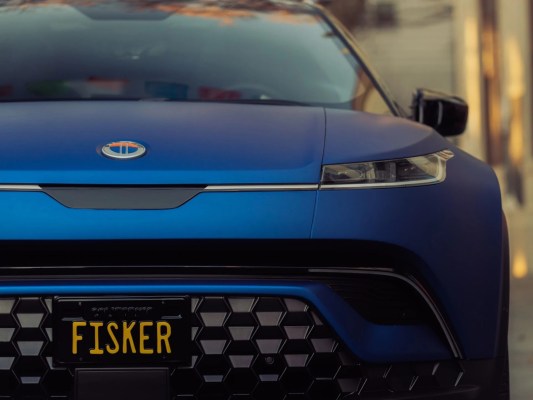U.S. electric automaker Fisker expects operating expenses to reach between $490 million and $530 million this year, a slight increase in its business outlook for the year that is driven by R&D spending on prototypes for its Ocean SUV, testing and validation of advanced technology, hiring and its “accelerating” partnership with Foxconn.
The company, which reported its second-quarter earnings Thursday after market close, raised its business outlook for expectations for key non-GAAP operating expenses and capital expenditures for the full year up from its previous guidance of $450 million to $510 million. The earnings report pointed to R&D spending on prototype activities in 2021 driven by testing and validation on advanced driver assistance systems, powertrain and user interface. The company also noted an increase in spending on in-house costs, such as virtual validation software tools, hiring and virtual and physical testing to account for recently tightened Euro NCAP and IIHS safety regulations.
Co-founder, CFO and COO Geeta Gupta Fisker added during an investor call that the company made a strategic decision to develop internal capabilities to test and validate, instead of relying solely on third parties.
Co-founder and CEO Henrik Fisker said in an interview Thursday its partnership with Foxconn, which is “moving faster than expected,” also is contributing to an increase in spending.
“We were really aligned,” Fisker said in an interview Thursday. “I mean it’s a very unique business deal because we are both investing into this program; it’s not like we just hired Foxconn to make a car.”
Fisker has two vehicle programs in the works. Its first electric vehicle, the Fisker Ocean SUV, will be assembled by automotive contract manufacturer Magna Steyr in Europe. The start of production is still on track to begin in November 2022, the company reiterated Thursday. Deliveries will begin in Europe and the United States in late 2022, with a plan to reach production capacity of more than 5,000 vehicles per month during 2023. Deliveries to customers in China are also expected to begin in 2023.
In May, Fisker signed an agreement with Foxconn, the Taiwanese company that assembles iPhones, to co-develop and manufacture a new electric vehicle. Henrik Fisker said the two companies moved on the design “fairly quickly,” and are now diving into the engineering and technical details that include working on a patent for a new way of opening a trunk and other technological innovations.
“We have accelerated really quite fast and we probably will have some early prototypes already by the end of this year,” he said.
The companies have also decided that this EV will be designed for the urban lifestyle.
“You can’t make a car for everybody,” he said. “You can’t make a car for a farmer and for somebody who lives in an apartment; those are two different vehicles, so we chose the urban lifestyle for this vehicle.”
Production on the Project PEAR car, which stands for Personal Electric Automotive Revolution, will be sold under the Fisker brand name in North America, Europe, China and India. Pre-production is expected begin in the U.S. by the end of 2023, and will then ramp up into the following year, Fisker said Thursday.
Henrik Fisker didn’t reveal the U.S. manufacturing location. He did make a recent visit to Foxconn’s manufacturing facility in Wisconsin, noting it was an “impressive” facility, as was the region’s supply chain. The final decision is Foxconn’s, Fisker noted. However, Fisker wants to produce the electric vehicle in a state that allows automakers to sell directly to customers. Wisconsin currently prohibits this practice.
“That’s going to be one of the main things that has to change for us to go to the store and sell our electric vehicle,” he noted.
Earnings results
Here are the basics from the company’s second-quarter earnings. Keep in mind two important factors: Fisker wasn’t publicly traded at this time last year, there are no year-over-year comparisons available yet; and this company is essentially pre-revenue, although they did bring in $27,000 from merchandise sales.
Fisker reported it generated $27,000 in revenue, a 22% bump up from the previous quarter. The automaker reported a net loss of $46.2 million, or $0.16 per share, compared to a net loss of $176.8 million in the previous quarter. That large net loss in the first quarter comes from changes in how the SEC treated non-cash items and resulted in warrants liability of $138 million in Q1. The public warrants are now retired and the company says will no longer have these impacts on future earnings.
Loss from operations were $53.1 million in the second quarter compared to a loss of $33 million in the first quarter. Importantly, the company has held onto its cash using what it describes as an “asset light” approach, which means it’s not building a factory, instead relying on partners. Cash and cash equivalents were $962 million as of the quarter ended June 30, slightly lower than the $985.1 million in the first quarter.
